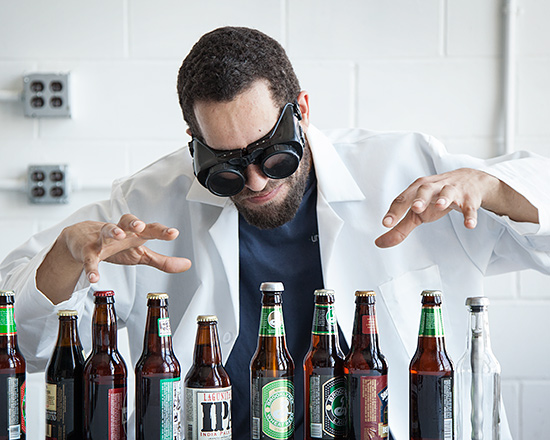When it comes to media darlings, reporters tend to give David (craft beer) more ink than Goliath (Anheuser Busch and the likes). There are many possible explanations for this phenomenon, ranging from “craft beer is more authentic” to “everyone loves the underdog.” Here is my theory: the media loves geeky stories, and craft beer brands happen to have more of them.

Wastewater Beer
NPR just announced on its culinary blog “The Salt” that The Oregon Brew Crew and Clean Water Services in Oregon seek approval to collaborate on making the first beer with treated wastewater (yes, you read correctly). The network of home brewers would make small batches of beer to be served at events, not (yet) at a brewery.

Takeaway for the Big Boys: My educated guess is that a larger brand has more R&D budget than a bunch of home brewers, some even more than a state agency. Think like a start-up when it’s time to decide what research project to fund next. An innovative study will always have a home in a consumer outlet with a passion for science and technology, like NPR.
Academia for Better Beer
In Virginia, a placement in The Richmond Times Dispatch, the largest daily paper, is as good as it gets. Hometown craft brewery Hardywood just landed a feature story thanks to a research partnership with local colleges. Students of Virginia Commonwealth University’s “Chemical and Life Science Engineering” program are currently conducting yeast studies to help Hardywood make a better sour beer.

Takeaway for the Big Boys: Partnering with a university lab is a win-win. The brand gets more in-depth knowledge of his product while students gain hands-on experience in their field. Better yet: Research projects offer multiple opportunities for media outreach: The partnership announcement, a glimpse at preliminary findings, a full report once the project is complete and maybe even a follow-up study. Impressions galore!
One-Night-Only Brews
This is not new, but a tried-and-true approach: Extremely limited editions, sometimes as little as one single keg, keep making headlines. None other than the Wall Street Journal dedicated a story on one-night-only brews with weird flavors. Atlanta’s craft brewery Red Brick Brewing got a prominent mention for its limited edition IPA with tropical melon taste.

Takeaway for the Big Boys: A great way to thank loyal customers, limited editions won’t make anyone profitable. However, the investment can result in a huge pay-off in media coverage when a newsworthy angle is identified, like using an ingredient that’s extremely rare and/or expensive.
What moves has the craft beer industry taught you for doing successful PR? Share your thoughts in the comments section.
